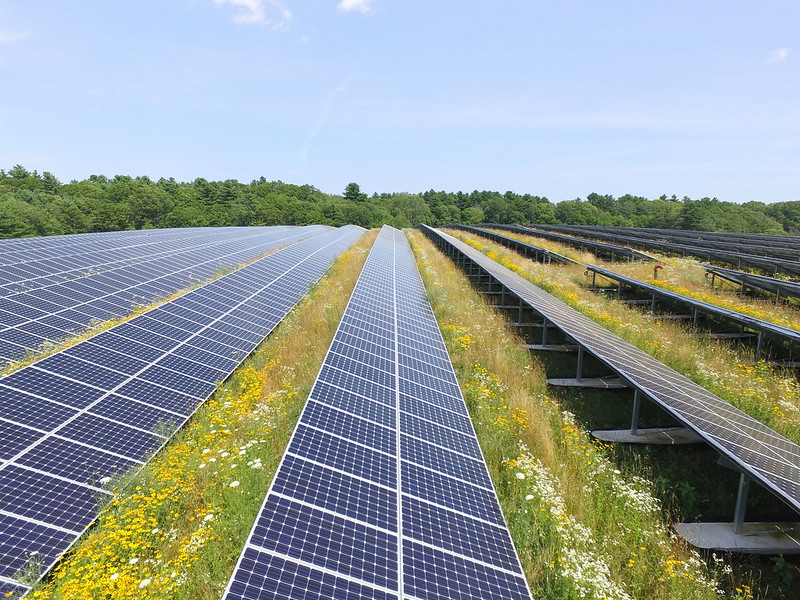State leaders commit to substantial additions in community solar capacity, add new “dual-use solar” program to create new opportunities for landowners
When New Jersey Senator Bob Smith thinks about the importance of renewable energy, he doesn’t have to look far. His granddaughter Layla, a rising high school senior with a curiosity for policy, is a living reminder about the perils of climate change.
“It’s existential,” he says, summoning Layla to make an impromptu on-screen cameo during our interview. “We don’t have anything near the time that some experts are positing for this. It’s coming at us like a freight train.”
That urgency is what led Smith to sponsor a pair of bills recently signed into law in New Jersey: one incentivizes solar development in a bid to double the state’s solar capacity and another that allows so-called “dual-use solar.”
A “successor” program to New Jersey’s initial Solar Renewable Energy Credit (SREC) market represents a significant commitment from New Jersey leaders to invest in scaling up the state’s solar market. The SREC-II (SuSi) program expands the goals for multiple types of solar generation to 750 megawatts per year by 2026.
For community solar projects, this represents an expansion of 75 megawatts in Year One of the existing pilot program to 150 MW per year for the next five years. The new 750-MW target means community solar should power 123,000 homes in the Garden State when the program reaches full capacity.
“New Jersey was one of the first states to create a solar market and state leaders have worked hard to develop a program that fits to their unique needs,” said Leslie Elder, Mid-Atlantic Regional Director for the Coalition for Community Solar Access. “This new investment in the combination of the successor program and the dual-use program launches New Jersey into an exciting new phase of solar leadership. We look forward to working closely with Governor Murphy to deliver on the commitments he has made to New Jerseyans to expand energy choice and access through community solar.”
The successor program additionally includes goals to expand community solar to low- and- moderate income customers who have traditionally have trouble accessing solar energy.
“The Board of Public Utilities should be commended for not only expanding community solar, but doing so in a way that builds equity in the clean energy economy and drives toward environmental justice,” said Elder.
With ambitious clean energy goals for generating more than a third of its power from solar by 2050, the Murphy Administration had to consider multiple new options for generation. While the state’s population density allows for efficient use of certain resources—density tends to lower basic infrastructure costs—New Jersey’s relative scarcity of available land made its renewable targets harder to reach.
Enter dual-use solar, which is raised higher from the ground than traditional solar panels, allowing farmers to use the same land for crops or for certain animals to safely graze. As the most densely populated state in the country, New Jersey faced a lot of pressure to implement dual-use solutions for solar energy.
“Dual use matched what New Jersey needed,” says Lucy Bullock-Sieger, director of strategy for Lightstar Renewables, which advocated in partnership with BlueWave Solar for the Jersey bills. “They had these massive clean energy goals, and they weren’t going to make it with rooftops alone.”
Liz Curran, Senior Director of Policy for BlueWave agrees. “New Jersey’s dual-use solar pilot program positions the state as a true solar leader nationwide,” she says. “It’s only the second state to establish a dedicated program for building solar projects on farmland that allow for continued agricultural use. This is a great way to give farmers new choices and consumers greater access to solar energy options.”
That leadership has a proud history, but it wasn’t always guaranteed.
The initial legislation allowed up to 2 megawatts of solar energy on farms—but according to Ed Wengryn, a 20-year veteran of the New Jersey Farm Bureau, that wasn’t enough to meet demand.
“No one was taking advantage of the program,” he says. “They wanted to be more in the 5- to 10-megawatt range.”
Dual-use was the compromise that allowed additional space to be dedicated for solar without permanently taking over too much farmable land.
“We saw that as the balanced approach,” adds Wengryn, who sees renewable energy as an additional diverse crop that can offer farmers financial security amid a changing climate that has unpredictable effects on crop yields.
“How great would it be for customers to get both their fruits and vegetables and their solar energy from the same working farm?’ Wengryn says. “We always saw that as a win-win for everyone.”
Smith championed the legislation in the Senate, but he credits Gov. Phil Murphy with continuing New Jersey’s strong history of adopting renewable energy.
“The governor bleeds green,” says Smith. “I’ve seen six, seven governors, but this guy goes to the top.”
While Smith has a battery of additional energy-related bills to introduce this fall, stakeholders will work with the Board of Public Utilities on program design to ensure that the already-passed bills are implemented effectively.
Everyone agrees that the program design will require flexibility in order to be effective and durable in order to serve the state’s diverse communities.
To Smith and others, the alternative is untenable.
“I don’t want Layla saying 20 years from now that we didn’t do enough,” he says, again referencing his granddaughter. “We’re going to do our damnedest to electrify everything. The only chance to electrify everything is with renewable energy.”




